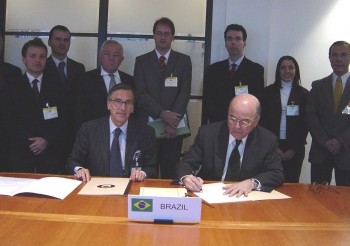Talk about Certification | ICO-- International Coffee Organization formulates the International Coffee Convention

125 million people around the world depend on coffee, and most of the coffee is produced by small coffee farmers, who farm so hard that the world consumes 600 billion cups of coffee a year.
A large amount of consumption makes coffee one of the widely traded commodities in the world. More than 60 countries mainly produce and trade coffee. These countries rely heavily on coffee exports. According to statistics, coffee export income accounts for 50% of the total export income. Therefore, the import and export of coffee need to achieve a stable balance between supply and demand through mutual trust and cooperation between countries, promote the sustainable development of the coffee industry, and help improve the living standards of coffee-exporting countries.
Full name: International Coffee Organization
Abbreviation: I.C.O.
Web page: http://www.ico.org/
Headquartered in: UK
Agreement: international Coffee Convention
Members: mainly the major coffee importing and exporting countries, the exporting countries account for 97% of the world coffee production, and the importing countries account for 80% of the world coffee consumption. at present, there are 37 member countries according to the statistics of the ICO website.
(http://www.ico.org/members_e.asp)
Founding History:
In the 19th century, coffee became an important commodity in international trade, and the coffee market was in a state of oversupply for a long time, which caused the price of coffee to be on the low side, but occasionally the price exceeded the demand. Even so, the coffee market was stable.
Between 1939 and 1945, the price of coffee fell due to a glut in the coffee market due to the economic crisis and World War II.
At the beginning of the end of World War II from 1950 to 1953, the demand for coffee increased sharply, and coffee was in short supply. The Korean War, the great drought in Brazil and the ensuing frost made the market even worse. Because the high price in short supply makes many farmers think that growing coffee is more profitable, which leads to a substantial increase in acreage and overproduction.
In the early 1960s, coffee prices fell sharply, bringing economic and political disaster to coffee-producing countries in Latin America and Africa. In view of this, in 1962, with the assistance of the United Nations, the International Coffee Organization was established in London, England, and signed the first international coffee agreement, commonly known as the International Coffee Convention, which has been developed and continued to this day.

Important Notice :
前街咖啡 FrontStreet Coffee has moved to new addredd:
FrontStreet Coffee Address: 315,Donghua East Road,GuangZhou
Tel:020 38364473
- Prev

Coffee World Map-- the Evolution and planting History of Coffee beans in Indonesia
For professional baristas, follow the Coffee Workshop (Wechat official account cafe_style) Indonesia is made up of more than 17, 000 islands scattered over the equatorial volcanic belt and has fertile soil. Famous producing areas include Sumatra in the west, Sulawesi in the middle, and Java in the south. Coffee was brought to Jakarta in 1696 by the governor of the Netherlands from Malabar, India.
- Next

Gourmet Panamanian coffee beans Hartman Manor Santa Clara
For the exchange of professional baristas, please follow the coffee workshop (Wechat official account cafe_style) [origin] Panama Panama [producing area] Chiriji Province Chiriqui, Vulcan Valley Volcan [Manor] Hartman Manor Hartmann Estate [name] Santa Clara Santa Clara [treatment] Honey treatment Honey Process [altitude] 1250 m meter [baking]
Related
- Does Rose Summer choose Blue, Green or Red? Detailed explanation of Rose Summer Coffee plots and Classification in Panamanian Jade Manor
- What is the difference between the origin, producing area, processing plant, cooperative and manor of coffee beans?
- How fine does the espresso powder fit? how to grind the espresso?
- Sca coffee roasting degree color card coffee roasting degree 8 roasting color values what do you mean?
- The practice of lattes: how to make lattes at home
- Introduction to Indonesian Fine Coffee beans-- Java Coffee producing area of Indonesian Arabica Coffee
- How much will the flavor of light and medium roasted rose summer be expressed? What baking level is rose summer suitable for?
- Introduction to the characteristics of washing, sun-drying or wet-planing coffee commonly used in Mantenin, Indonesia
- Price characteristics of Arabica Coffee Bean Starbucks introduction to Manning Coffee Bean Taste producing area Variety Manor
- What is the authentic Yega flavor? What are the flavor characteristics of the really excellent Yejasuffi coffee beans?

